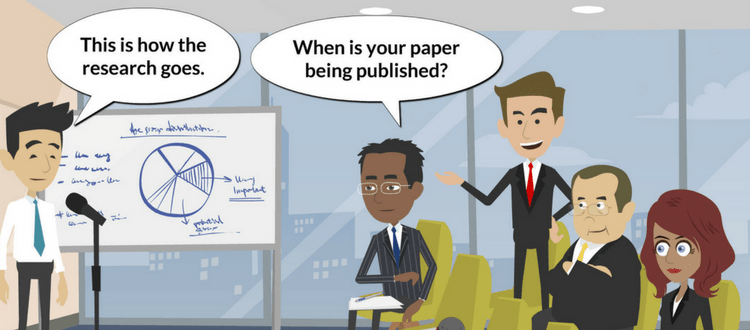Science Journalism: Communicating Facts Effectively a Critical Task

Science is a field where new discoveries are being made every day. Every year numerous scientific meetings and conferences take place. This is how humanity learns a bit more about the world and how it works. Despite this, mainstream journalism devotes far less time to science than it does to other concerns. Scientists are often reluctant to share much about their findings with the press before these findings get formally published in journals. What is the reason for this gap? What are some of the ways this can be addressed? Let us learn more about this.
What Defines ‘Prior Publication’?
It’s a common scenario: a journalist attends a local scientific conference, and hears a presentation that catches her attention. She proposes a story to her editor and has it approved, only to be rejected when she approaches the presenter for an interview. Why would a scientist not want to share his/her findings with the public, possibly gaining a wider audience, greater interest, and maybe even more funding if the right person reads the story?
The biggest reason for this reluctance is confusion over what exactly ‘prior publication’ means. ‘Publish or perish’ is a well-known saying in the scientific community, and for good reason- the careers of the majority of scientists and academics depend on the volume of their publications. But it is standard for scientific journals, including Nature, Science and Cell, to reject papers containing research that has been published already. Many scientists interpret this in a different way. For them, it means that any article about their findings— even if it is published in a newspaper as a very brief article— may not make their way to the target journal. It can threaten their chances of having their submissions to journals accepted if the article appears first. This results in the situation described above.
However, most journals make it clear that such articles do not, in fact, equal ‘prior publication’. The majority of journals encourage the sharing of unpublished work at conferences and meetings. They state that presentation of the material at such events does not endanger the chances of a journal submission being accepted. But when it comes to speaking directly with journalists, the rules become more unclear.
Conflicting Messages
Different journals have different views on this context. Science states in their editorial policy that authors may freely share their data at scientific meetings. However, they “should not overtly seek media attention or give copies of the figures or data from their manuscript to any reporter.” The journal further states that scientists should limit interviews with journalists at such meetings. They should restrict it to clarifying the specifics of a presentation.
Nature has a similar policy suggesting that scientists should not talk to journalists directly at conferences. However, in 2009, an editorial in the journal stated that it was fine if the press covers the content of such conferences, as long as scientists do not directly seek media coverage. In other words, scientists can confirm the facts of presentations given at conferences to journalists. But they should not seek out press coverage of their work or discuss it in detail beyond what they present.
With these uncertain rules, it is no wonder that most scientists tend to play it safe and not risk interviews regarding their unpublished work. At the same time, there is a growing pressure for scientists to become more visible in the media. As stated earlier, media attention can attract interest and funding. In fact, universities and other research organizations want their scientists to become popular in the media.
Blogging and tweeting within the scientific community at conferences also remains a gray area. Journals like Nature do not yet have an explicit policy as to whether these activities are acceptable or not. However, with the use of social media growing, the demand to address the issue keeps on increasing as well.
What about the Journalists?
The situation is obviously a frustrating one for journalists as well as scientists. If the journalist proceeds with her story on the conference anyway, it likely won’t have any negative consequences for the scientist. This is because it falls well within the guidelines laid out by major journals. However, the reluctance of scientists to give interviews makes science journalism quite challenging. It is likely to be one of the many reasons for the lack of science reporting in the mainstream media.
Some journalists have used the strategy of sharing copies of journal embargo policies with scientist. This is to reassure them that giving a brief interview to clarify facts on their presentations would not hurt their chances of publication. Others keep spreadsheets of news articles published about research. They also keep a track of the date of the research being published. This, in turn, provides substantial proof that interviews are harmless. Regardless, many journalists find themselves in the situation described earlier. There is a lack of clarity in journal policies at present. As a result, there does not seem to be a clear strategy to avoid the problem going forward.
What do you think of press coverage of scientific conferences? Should scientists be more liberal in sharing their research with the press? Please share your thoughts with us in the comments section below.









